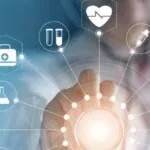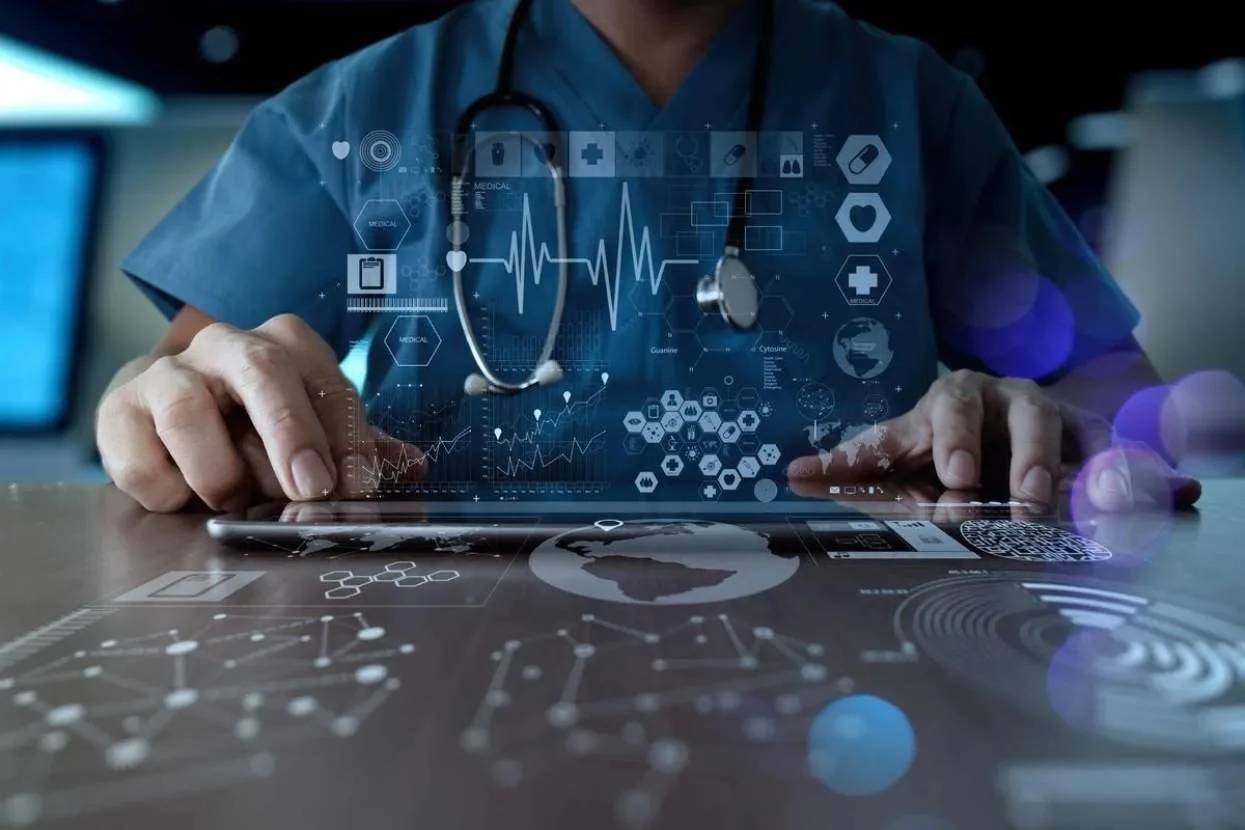Today we live in a world where medical technology and devices have become more advanced than ever before. Here is a list of the top 10 medical technologies in 2022
Emerging technologies have opened up new possibilities for healthcare professionals to treat various diseases and conditions. These technologies are making it possible for us to diagnose diseases much earlier, monitor our health more closely, and take preemptive measures to avoid getting sick or heal faster when we do get injured.
What exactly is medical technology?
Medical technology is a broad discipline that includes devices used in healthcare for diagnosis, patient care, treatment, and health improvement. It is used to connect patient care with technology in the healthcare industry.
MedTech provides everything from bandages to MRI scanners, from dental floss to CT scanners, from catheters to wheelchair. Medical devices include biotechnology, pharmaceuticals, and in vitro diagnostics (IVD) laboratories and pharma/biotech level diagnostics.
Benefit of medical technology
The MedTech sector supplies a lot of advantages to healthcare service providers and enhancements lead to better patient care quality. These devices provide accurate results which assist clinicians in developing a more effective treatment plan. Since the initial results, such as laboratory results and scans, are free of errors, patients may experience improved results at a faster pace.
Furthermore, clinicians and patients both save time with MedTech devices and procedures. It is now possible to perform procedures using less complicated technology. MedTech also provides better, more advanced, and less invasive treatment possibilities.
It’s also a discipline that healthcare professionals find simple and convenient because of its accurate, time-saving, and straightforward nature.
The following is a list of some of the most innovative medical technologies that are currently transforming the world of medicine as we know in 2022:
1. WEARABLE HEALTH MONITORING DEVICES
Wearable health monitoring devices have made it easier than ever to track our habits, fitness levels, and overall health. They utilize a wide range of sensors that allow them to track a variety of health metrics such as heart rate, blood oxygen level, stress levels, skin temperature, and more.
Some of the most common wearable health tracking devices include fitness trackers, blood pressure monitors, sleep trackers, smart watches, and more.
Wearable health monitoring devices have become increasingly popular in recent years given the many benefits they provide for health tracking and monitoring. One of the biggest benefits of these devices is that they are very cost-effective. They are also easy to use and don’t require users to schedule doctor’s appointments or obtain prescriptions. They can simply be worn on a regular basis to track and monitor a variety of health metrics.
Wearable health monitoring devices are beneficial for a wide range of people. They can also be helpful for those who want to track their overall health and fitness levels, those who suffer from certain diseases, and those who want to monitor their infants.
2. DNA SEQUEENCING AND GENOMICS RESEARCH
DNA sequencing and genomics research has led to many medical discoveries and is helping to advance our knowledge of genetic diseases and other medical conditions.
The technology behind DNA sequencing has been around for some time, but it was only recently that it became more affordable and efficient.
Today, the cost of sequencing an entire genome has dropped significantly and can be completed in a short amount of time. This technology can be used not only for sequencing human DNA, but also for sequencing the DNA of various other organisms.
And while genomics research is beneficial for medical research, it has also made it easier for researchers to breed new varieties of plants and animals. With DNA sequencing, researchers can determine the genes of an organism and can predict the traits that organism will pass on to its offspring.
DNA sequencing is helping to advance research in a variety of different fields. It is particularly useful for helping researchers to identify infectious diseases and viruses, find a cure for them, and develop treatments for them.
DNA sequencing is also useful for determining the genetic cause of certain diseases and conditions. It can help researchers to track the genetic history of specific populations, identify variations in different populations, and predict how one population will evolve over time.
3. ROBOTICS IN MEDICINE
Robotics in medicine has become a popular technology in recent years as it has been used to automate and streamline various healthcare processes.
Robotics in medicine is primarily used in the operating room, but it is also used in other areas of healthcare such as rehabilitation and assisted living. Operating rooms that employ robotics have been shown to be as safe or even safer than those that don’t.
There are two main types of robotics that are used in the operating room: surgical robotics and image guided robotics. Surgical robotics are used to perform minimally invasive surgeries, which are procedures in which smaller incisions are made and less tissue is removed.
Image guided robotics are used to automate certain imaging processes and computer-assisted surgery. Robotics in medicine can help to improve accuracy and reduce human error, which can be especially beneficial in the operating room. Robotics in medicine can also help to improve efficiency and reduce costs.
4. ELETRONIC HEALTH AND MEDICAL RECORDS
Electronic medical records are computer-based systems that are used to manage and store medical information. They became more popular in recent years as they have been shown to improve healthcare quality, help to reduce medical errors, and increase the efficiency of healthcare providers. However, due to the high costs, they are not yet used in many healthcare facilities.
EHRs, which stands for electronic health records, are the software programs used to store and manage medical information. Healthcare providers that use EHRs can benefit from having a single, centralized database of patient information. This makes it easier for providers to access and share information about their patients.
EHRs can help to improve the communication between healthcare providers and help prevent medical errors. They can also help to increase the efficiency of providers and make it easier for patients to communicate with their healthcare providers.
5. TELEMEDICINE AND REMOTE PATIENT CARE
Telemedicine is a technology that allows healthcare providers to communicate with patients remotely through the use of video, phone, or other digital communication methods.
It has become more common in recent years as technology has become more advanced and the internet has become faster and more accessible. Remote patient care is a type of telemedicine that allows healthcare providers to interact with patients who are not in the same location as them.
This technology is beneficial for patients who live in areas that are far away from healthcare facilities or physicians. Patients who are homebound or bedridden and cannot travel to see their providers also benefit from remote patient care.
It can also be beneficial for patients who have to wait a long time to get an appointment with their healthcare provider. It’s also important to note that remote patient care is not the same as telehealth, which is a wider term that describes different types of health services that are delivered over long distances.
6. MRNA TECHNOLOGY
Vaccines that use mRNA technology, the new Covid-19 vaccines among them, have been in the spotlight recently. mRNA vaccines, which are highly effective, quick to develop, and cheap to produce, are an alternative to traditional vaccines.
mRNA, messenger ribonucleic acid, is a single-stranded RNA molecule that carries the genetic information derived from DNA. After the viral proteins are produced, an immune response is then produced as a result of providing a genetic code to cells.
Because of the success of the Covid-19 mRNA vaccines, there has been a tremendous boost in the development of other mRNA vaccines for everything from cancer to Zika virus.
According to some researchers, mRNAs may be used to create a wide variety of therapeutic drugs by instructing the body to create therapeutically active substances. Using this technology, we may be able to manufacture proteins to treat a variety of conditions by getting the body to do it for us.
Furthermore, it is possible that the same technology may be used to create a wide variety of vaccines. Protein-based medicines such as antibodies generated outside the body are frequently very effective but also very expensive. The human body may be employed to manufacture proteins more quickly and cheaply by using mRNA technology.
7. TECHNOLOGY IN MENTAL HEALTH
Globally, depression is projected to become the leading cause of illness burden by 2030, making the need for new treatments more pressing than ever.
There have been many new technological developments over the last year that may help patients with ongoing mental health issues.
Frequently, patients are able to complete their intakes and receive a preliminary diagnosis through mental health apps that utilise AI.
Chatbots, such as Woebot, can assist patients practice their cognitive behavioral therapy (CBT) strategies by using smartphone apps, and apps like Ellipsis can detect emotional distress based on a patient’s voice and speech patterns.
Digital symptom tracking is crucial for future mental health care to optimise efficiency. Patients are prompted to share data online, and providers are alerted in real time if there are any warning signs based on an AI algorithm’s analysis of the data.
EndeavorRx is the first and only FDA-cleared video game treatment approved in 2020. Video games are being used in mental health care in new ways. The game is used to improve the attention span of children 8-12 years old with ADHD and requires a prescription. 73% of participants in clinical trials reported an increased ability to pay attention.
Video games are set to become a more popular, affordable, and accessible treatment for a variety of health issues thanks to this triumph.
A new video game publisher and developer, DeepWell Digital Therapeutics, recently announced that they would be creating games that could simultaneously entertain while enhancing, accelerating, and improving treatment for a variety of mental health issues.
8. PRECISION MEDICINE
Precision medicine is becoming increasingly personalised as medical technology advances. Precision medicine recognises the individual genetics, environment, and lifestyle of each patient. For example, precision medicine can customise cancer treatment for patients based on their unique genetic make-up.
Although other treatments are less efficient, this personalised medicine works by attacking tumours based on the patient’s genetics, causing gene mutations and enabling the cancer drug to be more easily eliminated.
Precision medication has the capacity to revolutionize healthcare in the future. Precision medication is currently most advanced in oncology, but it also has fantastic potential in treating rare and genetic diseases, as well as infections.
Infrastructure problems, inequities, and knowledge issues can make it difficult for precision medicine to become integrated into healthcare.
9. NEUROTECHNOLOGY
Neurotechnology has the potential to improve many aspects of life. It is already being used in medical and health care fields, but it also has many future implications for education, workplace management, national security, and even sports, among others.
Brain function and visualisation are among the many areas that fall under neurotechnology. These components include computers, electrodes, and other devices that can intercept electric impulses that flow through the body.
Brain imaging, recording magnetic fields generated by brain electrical activity, brain and nervous system stimulation, and neurodevices, which monitor or regulate brain function through neuralink, a pioneering brain device, are all being used in healthcare.
Neurodevices are still in the research phase, but they have a lot of potential for treating brain disorders. Neuralink is one of these.
A company founded by Elon Musk is developing a neuralink device that will be implanted in the brain and wirelessly transmit brain activity to a computer. It can be used to cure brain disorders such as Alzheimer’s and Parkinson’s if it is successful. Neuralink has been tested on animals so far, but Musk has said that the company intends to start implanting its chips soon.
9. VIRTUAL REALITY
Virtual reality has been employed to address a diversity of mental health issues and problems for some time. However, it is currently being utilised more frequently to treat and manage a range of mental health problems and issues, including stress, anxiety, dementia, and autism.
Virtual reality also has the capability to alter the patients’ perceptions and perceptions of pain, in addition to its function in treating mental health problems. Medical professionals are also trained more effectively with virtual reality, as it allows them to journey into the human body.
When diagnosing patients, a panoramic view of their body gives them a better understanding of their condition or condition.
10. ARTIFICIAL INTELLIGENCE
The transformation occurring in healthcare as a result of AI is one of the most thrilling in 2022 and is becoming increasingly effective at detecting diseases, diagnosing them accurately, and determining them early.
Using AI in breast cancer care, mammograms may be reviewed 30 times faster with 99% accuracy, decreasing the need for unneeded biopsies. In addition, AI is being used to spot early-stage heart disease, allowing healthcare providers to detect life-threatening complications at an earlier and more treatable stage.
Clinicians are also using AI to create more comprehensive treatment programmes, allowing patients to manage their problems more effectively.
Latest Top Medical Technology News Headlines of 2022
New light for shaping electron beams
Source: University of Vienna
A new technique that combines electron microscopy and laser technology enables programmable, arbitrary shaping of electron beams. It can potentially be used for optimizing electron optics and for adaptive electron microscopy, maximizing sensitivity while minimizing beam-induced damage
Researchers visualize alpha-synuclein pathology in living patients with a neurodegenerative disorder
Source: The National Institutes for Quantum Science and Technology
Multiple system atrophy (MSA) is a neurodegenerative disorder characterized by the aggregation of alpha-synuclein in the brain. Now, scientists have developed a radioligand that facilitates the imaging of alpha-synuclein aggregates in patients with MSA. Their findings have the potential to completely change the scenario of diagnosing neurodegenerative diseases.
Microrobotics in endodontic treatment, diagnostics
Source: University of Pennsylvania
In a proof-of-concept study, researchers have shown that microrobots can access the difficult to reach surfaces of the root canal with controlled precision, treating and disrupting biofilms and even retrieving samples for diagnostics, enabling a more personalized treatment plan.
Fiddler crab eye view inspires researchers to develop novel artificial vision
Source: GIST (Gwangju Institute of Science and Technology)
Motion sensing, item detection, and self-driving vehicles all rely on artificial vision systems. They are unable to function in dynamic environments and are limited to a hemispherical field-of-vision (FOV). A new artificial vision technology with a 360-degree FOV has been developed in an attempt to image both land and water environments. The all-weather vision and panoramic object detection can be achieved with this system, which is based on the eye structure of the fiddler crab.
Sustained Raman imaging of large samples at the nanoscale
Source: Institute of Post-LED Photonics, Tokushima University
Optical nano-imaging techniques find immense applications in nanotechnology for visualizing nanoscale defects in samples. However, it is challenging to image large micron-sized samples at nanoscale resolution owing to signal distortions resulting from unavoidable thermal and mechanical drifts of the system over time. Now, researchers from Japan have developed an ultrastable nano-imaging system that successfully detects unique nanoscale defects not observed in conventional nano-imaging in micron-scale tungsten disulfide samples, widening the technique’s scope to biological samples.
Tumors partially destroyed with sound don’t come back
Source: University of Michigan
Liver tumors in rats are being eliminated using noninvasive sound technology developed at the University of Michigan, killing cancer cells, and spurring the immune system to prevent further spread, an achievement that may lead to better cancer treatment in humans. In 80% of rat subjects, the immune system cleared away the remaining 50% to 75% of liver tumor volume, with no recurrence or metastases being observed.
The super-fast MRI scan that could revolutionize heart failure diagnosis
Source: University of East Anglia
Researchers have developed cutting-edge technology to diagnose patients with heart failure in record time. The state-of-the-art technology uses magnetic resonance imaging (MRI) to create detailed 4D flow images of the heart. But unlike a standard MRI scan, which can take up to 20 minutes or more, the new 4D heart MRI scan takes just eight minutes.
Optical fiber imaging method advances studies of Alzheimer’s disease
Source: American Institute of Physics
A hair’s-width optical fiber holds out the hope of being used in minimally invasive brain-damage studies, providing brain-damage patients with the highest quality images currently obtainable. However, increasing image resolution at the subcellular level is difficult, because information is inevitably lost as photons scramble.
Researchers develop wireless implantable vascular monitoring system
Source: Georgia Institute of Technology
Researchers are improving the odds for patients with the development of an implantable soft electronic vascular monitoring system. Their smart stent and printed soft sensors, is capable of wireless real-time monitoring of hemodynamics without batteries or circuits.
Joystick-operated robot could help surgeons treat stroke remotely
Source: Massachusetts Institute of Technology
Engineers developed a telerobotic system to help surgeons remotely treat patients experiencing stroke or aneurysm. With a modified joystick, surgeons may control a robotic arm at another hospital to operate on a patient.
How Advanced Medical Technologies Are Changing Healthcare
Most people, including busy entrepreneurs, have traditionally viewed “taking care of their bodies” as visiting a doctor once a year to review some routine blood tests. Medical technology, however, is rapidly and significantly altering the healthcare environment to go beyond this elementary approach.
Today, patients are able to obtain the most comprehensive picture of their health using genomics, cancer blood tests, MRIs, sleep analysis, and other innovations. As a consequence, these technological advances are revolutionizing healthcare to become more proactive, personalized, and convenient than ever before. As a result, these advancements have become more popular.
Patients can benefit from modern medicine by addressing health issues before they become problematic. With a reactionary approach to medicine, traditional health systems are often criticized for ignoring patients until they are in serious need of medical care.
Medical technology has made it easier for patients to receive treatment for their health issues.
Some healthcare innovators have begun offering full-body MRI scans as part of their executive health exams—exams for high-achievers such as CEOs and senior executives, among others.
These safe and painless procedures can identify multiple health problems before symptoms manifest, including brain tumours, spinal deterioration, pulmonary issues, heart disease, and more.
Similarly, new cancer blood tests can examine a patient’s blood sample for over 50 different kinds of cancer at once. Patients can be certain that diseases aren’t developing in their bodies undetected with these technologies.
The Future Of Healthcare
Patients will continue to rely on companies that use technology in healthcare to give them the greatest control over their health. As technology progresses, we will find new ways to care for our bodies. Increasing longevity and improving performance has never been simpler thanks to a healthcare system that is evolving to be more proactive, personalized, and user-friendly.
Medical Technology Development
The mechanism of disease and human health has witnessed significant advances in the last fifty years, resulting in a biological revolution. Biological innovation, as envisioned by Francis Bacon, who emphasised the importance of applying scientific knowledge to improve human living conditions, has been highly valued in our society for several decades.
Biomedical research has certainly stimulated the production of numerous effective medical devices, but their translation from the laboratory to the clinic has raised complex medical, economic, and social issues. Because of the development of new AIDS drugs, issues such as these—about how innovation occurs, how much it delivers, and how much it might be improved—are now attracting fresh attention.
A new medical technology is identified, developed, and distributed throughout health care as part of medical innovation. The riskiest stage in the innovation chain today is the development phase, known as “R&D”, in which research findings are translated into medical practice.
Medical technology development is a multi-step procedure in which a new biological or chemical substance, a novel medical device, or a new clinical treatment is technically modified and clinically assessed until it is deemed fit for general use. Even though this definition appears systematic and organised, much developmental work takes place chaotically in routine clinical practice.
According to Kenneth Melmon, it is necessary to provide different types of evidence to the various participants in the innovation process—industry officials, regulatory agencies, and clinical research and practice—because they make decisions in different ways.
For example, regulatory and clinical decisions differ in the amount of information required. While postmarketing regulatory bodies require information on long-term safety in everyday clinical practice, marketing approval requires evidence of a new technology’s safety and efficacy.
Clinical decisions, on the other, must determine the relative effectiveness of various health benefits and risks associated with managing a clinical condition. In addition, patient preferences must be determined for health benefits and risks.
Extended Summary
As technology continues to advance, it is likely that we will see even more innovative medical technologies. Many researchers are working on new technologies that could make our healthcare practices more efficient and effective. It is important to keep an eye out for these new innovations and how they could impact the world of medicine in 2022 and beyond.







